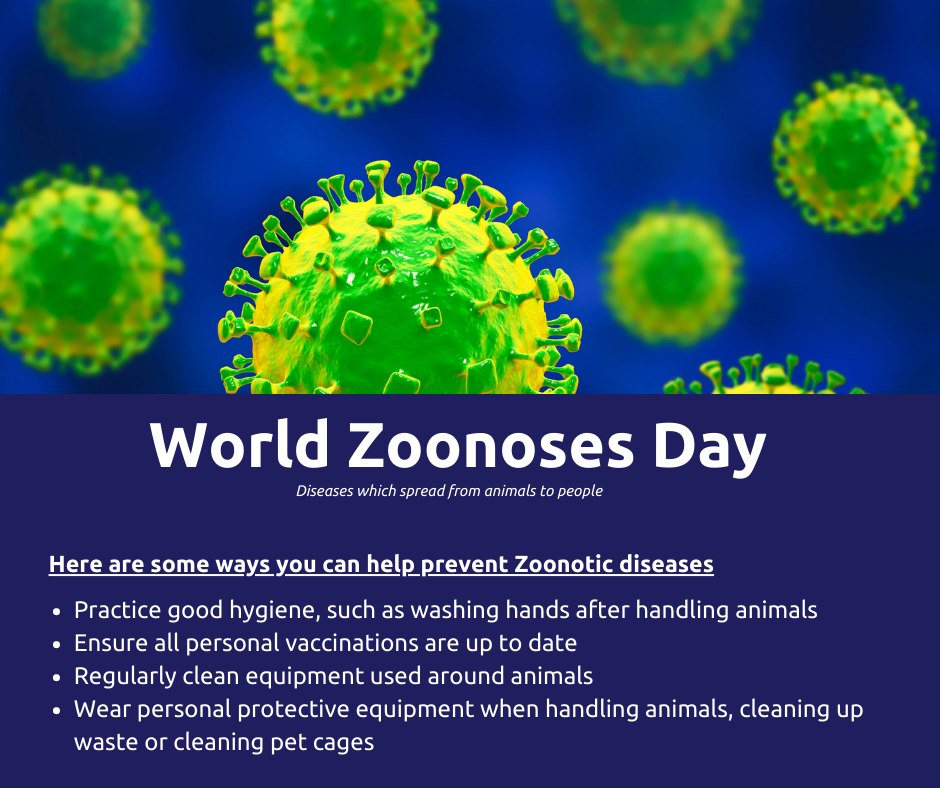World Zoonoses Day! More important than ever

World Zoonoses Day is celebrated on 6 July 2022 in recognition of the achievements of renowned French chemist and microbiologist Louis Pasteur, who on 6 July 1885 administered the first rabies vaccination.
This year, World Zoonoses Day was more relevant than ever.
2022 has already seen increases in the detection of two zoonotic diseases by the Department of Industry, Trade and Tourism – Japanese encephalitis virus and Leptospirosis – in the Northern Territory (NT). Reminding us that vigilance for zoonoses is always necessary.
Reminder of what is Zoonoses
Diseases passed from animals to humans are known as zoonoses (pronounced zoo-oh-no-sees).
They can be caused by viruses, bacteria, parasites and fungi.
Zoonoses can be passed by livestock, pets, feral animals and wildlife. They can infect you through direct contact or indirectly through contaminated water, soil or equipment.
Zoonoses that may occur in the NT include all of the following:
- Australian bat lyssavirus
- cat-scratch disease
- cryptosporidiosis
- giardiasis
- Hendra virus
- Hydatids
- Japanese encephalitis
- leptospirosis
- listeriosis
- melioidosis
- psittacosis
- Q Fever
- ringworm
- salmonellosis
- scrub typhus
- spargonosis
- toxoplasmosis.
For information about specific diseases, go to the Centre for Disease Control publications page at the Department of Health website.
Read the Agnote diseases that can be transmitted from animals to humans PDF (168.6 KB).
Japanese Encephalitis (JE)
JE is a mosquito-borne viral disease that can affect pigs, horses and also people.
The normal lifecycle of JE is between waterbirds and mosquitoes. People and animals become infected through the bite of infected mosquitoes, which means you can’t catch it from eating pork or through person-to-person contact.
The disease was detected in piggeries in New South Wales, Queensland, South Australia and Victoria earlier this year – the first time it has appeared in southern Australia.
As JE virus is carried by mosquitoes, one of the easiest ways to avoid the spread of JE to either people or animals is to reduce exposure to infected mosquitoes.
Horse and pig owners especially need to keep an eye out for signs of JE, even now in the winter months.
Risk from zoonotic disease can be managed by practising good animal biosecurity and maintaining proper hygiene. All Australians can play a part in managing the risks of zoonoses.
Leptospirosis (lepto)
The bacterial disease leptospirosis is an example of a zoonotic disease of worldwide importance. The disease has been reported in over 150 mammalian species around the world, including wildlife, rodents, cattle, pigs, horses, dogs and people.
The Leptospira bacterium that causes leptospirosis is spread through the urine of infected animals. The urine can get into the soil or water and survive there for weeks to months, posing a risk to other animals and people.
In affected areas, where there is exposure to infected urine of domestic and wild animals, leptospirosis can be an occupational and recreational hazard to people.
This includes for those working in the agricultural sector, veterinarians dealing with potentially affected animals, or people swimming or wading in contaminated water.
On World Zoonoses Day as we reflected on the risk of zoonotic diseases, we can all be part of the efforts to minimise and prevent the risks posed to human and animal health by zoonoses through practicing good hygiene procedures when interacting with animals.
Being aware of how zoonotic diseases can potentially spread from animals to people can help prevent the spread of zoonotic diseases.
